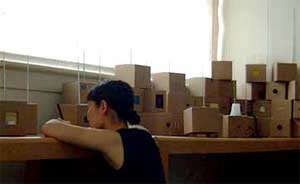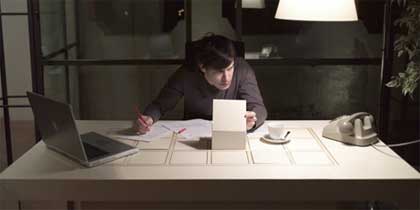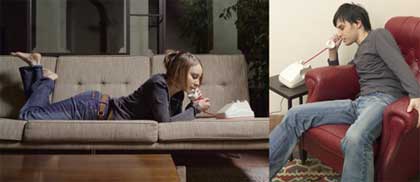 Gillian Crampton Smith is regarded as one of the pioneers of interaction design. In 1989, she established the Computer Related Design Department at the Royal College of Art in London. In 2001 she set up the Interaction Design Institute Ivrea in Italy, a graduate school and research institution sponsored by Telecom Italia and Olivetti which gained wide recognition as a leading centre for interaction design research and education. She is also the Chair of Convivio EU Network.
Gillian Crampton Smith is regarded as one of the pioneers of interaction design. In 1989, she established the Computer Related Design Department at the Royal College of Art in London. In 2001 she set up the Interaction Design Institute Ivrea in Italy, a graduate school and research institution sponsored by Telecom Italia and Olivetti which gained wide recognition as a leading centre for interaction design research and education. She is also the Chair of Convivio EU Network.
She is now developing together with Philip Tabor a graduate programme of interaction design in the faculty of design of the IUAV University in Venice.
The craft of Interaction Design has developed through experience without thinking too much about rationalizing it. Like Bauhaus’ work in the ’20s, the new grammar of film making developed by Eisenstein, it can be a platform from which those coming after us can build upon. Many designers work in a very intuitive way. So far any attempt to systematize design has proved inconsistent. The only way to research design is by doing design.
Design as research.
– Argument 1. Design isn’t research: design has no theory, no fool-proof methods, design is intuitive and overrationalism will ruin it.
Design reflects on what has been done and draws on it. It’s risky to apply paradigms of science to design. Theories about architecture have been around for centuries, design is much younger. There are thousands of interaction design projects and only a few are really relevant for research. She reminded how hard it had been years ago to convince the Design Council that what interaction design was doing was relevant for research. Now it’s much better accpeted and understood. Research projects seek to provide knowledge and insight. If a research project fails, there is still a gread deal that has been learnt by doing that research. This doesn’t apply to design, you can’t say to a client: “it didn’t work, but we’ve learnt so much in the process!”
Argument 2. All design is research. Each design problem is unique. Design progresses through exemplars. Design repertoires.
Argument 3. Includes the invention and generation of ideas, images, performances and artefacts, including design, where these lead to substantially improved insights.
Looking for 3 types of insight:
– Medium: what is possible within the constraints of technology;
– People: ways technology could better support people’s needs, values, desires;
– Process: improving the way systems, products and services are designed.
What is possible to do with technology? How can we communicate it in implicit and explicit ways?
 Examples.
Examples.
Victor Vina and Massimo Banzi‘s Box. The platform allows non-technical people to experiment freely with designing interactions between physical devices and their wireless networking. These networks could connect objects in different rooms of a building-or even in different countries or continents.
Each cardboard box can do one simple input or output thing. Each box knows where it is, the time and where the other boxes are. Interactions can take place anywhere in the world; for example, a box in Ivrea can have a switch that turns on a light in Tokyo-all done via the Internet.
Gilian Crampton-Smith then showed several projects from Strangley Familiar, a series of explorations into physical computing by ex-students of Ivrea. The first rule the students were given was “No button.”
 Message Table, for example, is an answering machine that forces you to have a clear desk.
Message Table, for example, is an answering machine that forces you to have a clear desk.

The cord connecting each of the Tug Tug telephone to its base is a shared interactive object, allowing each person to affect the distant phone physically by pulling the cord. If you pull the cord, the receiver at the other end falls of the hook.
Hardware platforms developed at Ivrea that build on processing: Wiring and Arduino.
Need to make a difference: after some 20 years of interaction design, we still spend a tremendous amount of time staring at a screen and typing with two fingers. Good ideas need to be sustainable, understandable and not just implementable.
Aequilibrium is an interactive environment developed for the Rialto fish market in Venice. The project shows how to use a technology without loosing the quality that makes the city so special. The fish in Aequilibrium react to your presence: they get scared and avoid your arrival but they become your friends when you are quiet. Four columns on the sides show predictions and pollution. The prediction can change accoring to your behaviour, by interacting with Aequilibrium you get a sense of how your actions can influence nature
Bad pictures of the slides.
